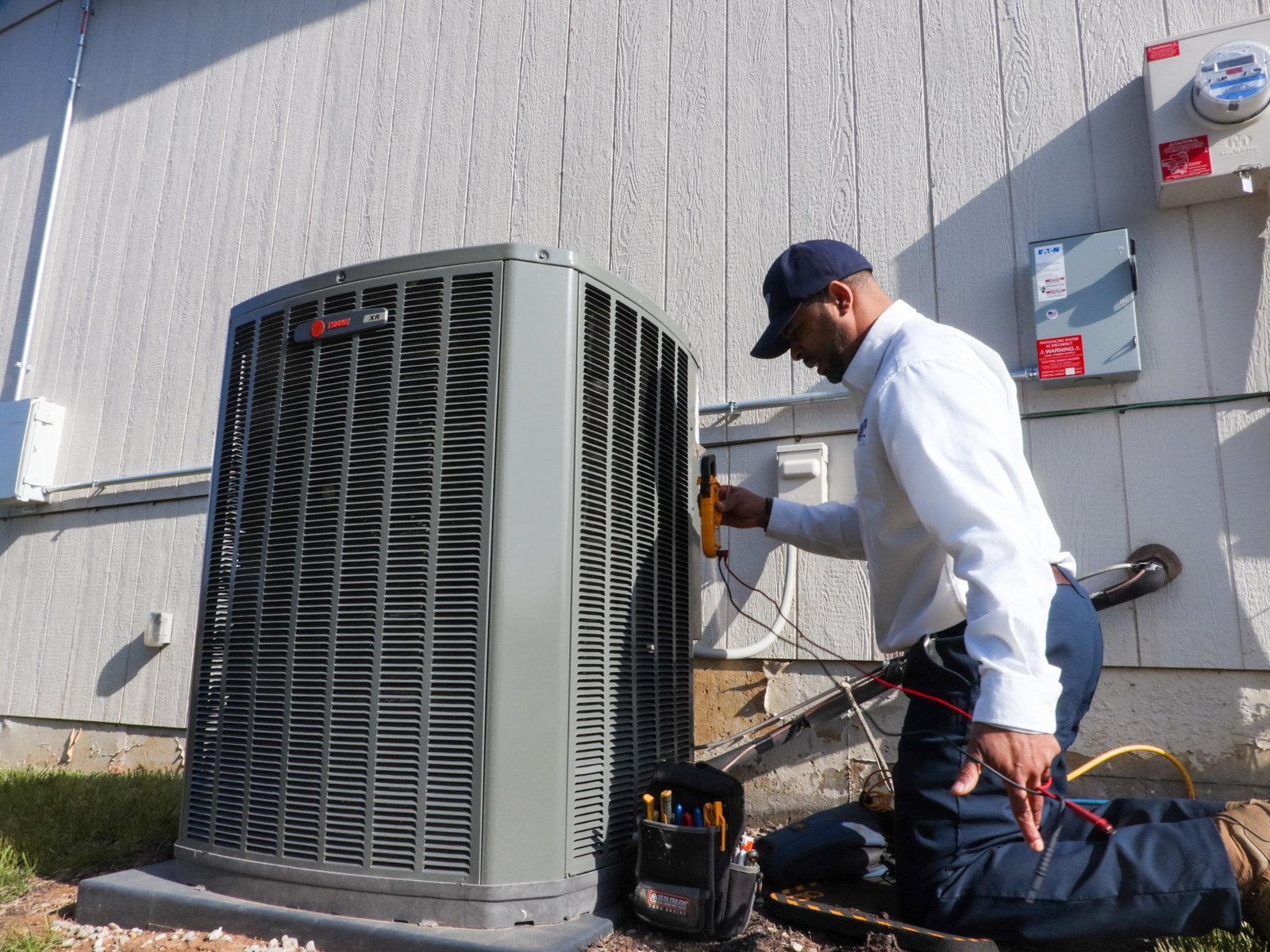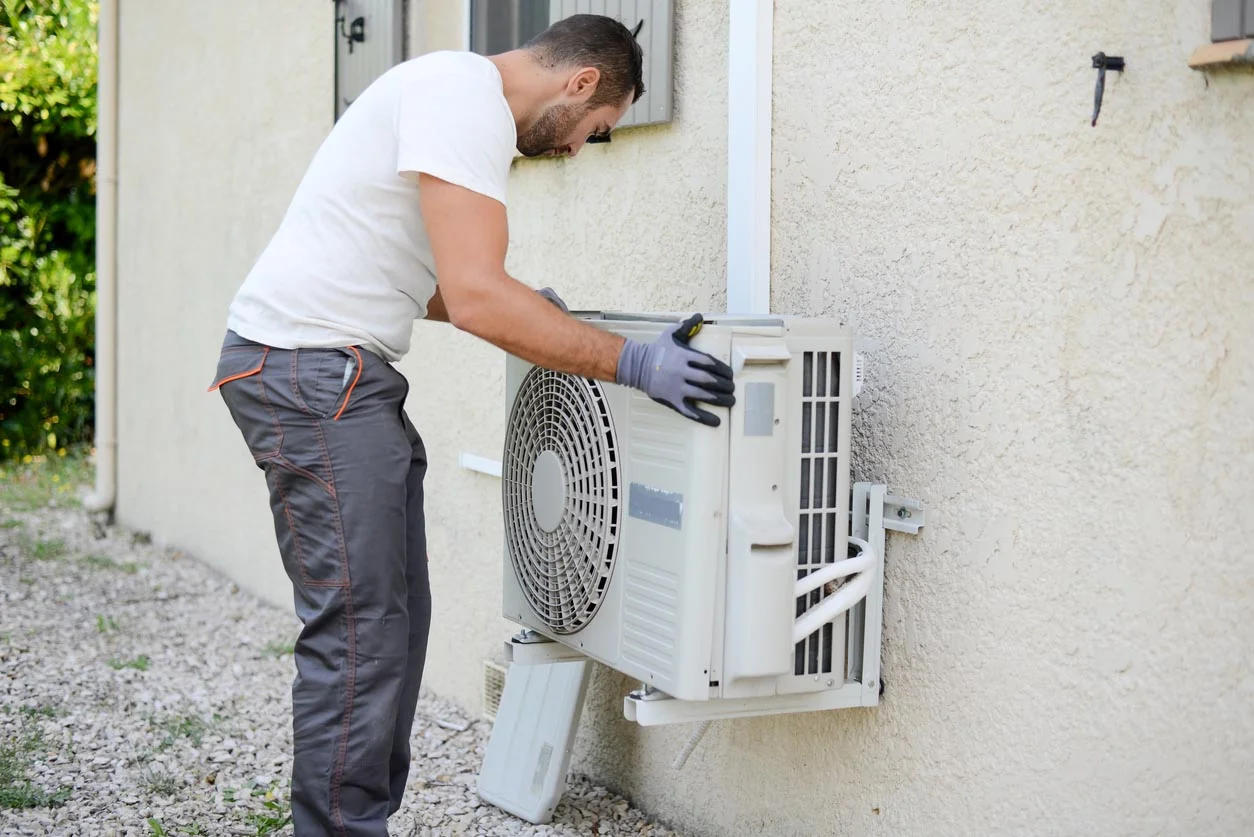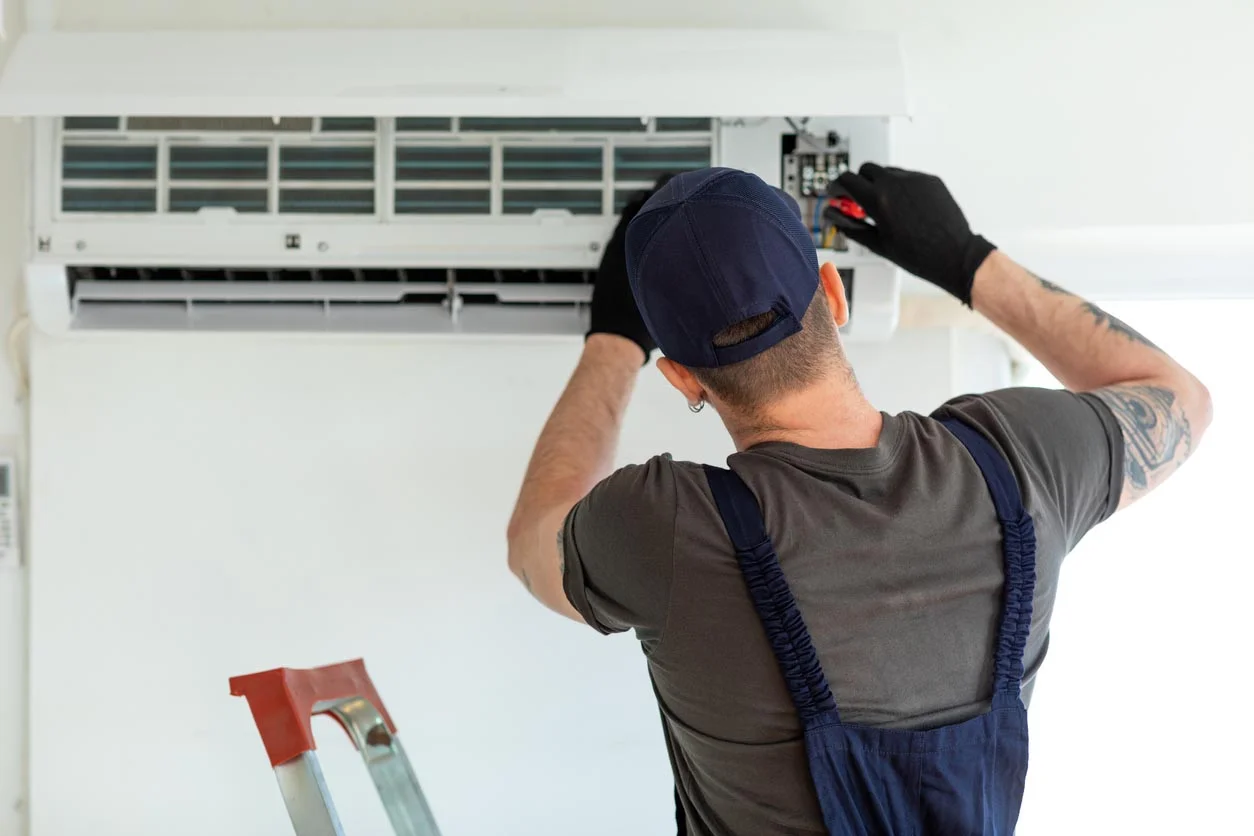Let’s Start Work
Together
Please feel free to contact us. We will get back to you with 1-2 business days. Or just call us now.


How can we help?
If your air conditioning system is experiencing issues, you can expect expert repair services to restore its functionality. Our technicians are highly trained and experienced in diagnosing and resolving various AC problems, including refrigerant leaks, compressor failures, faulty thermostats, and motor malfunctions. We aim to identify the root cause of the problem and provide effective solutions to get your system back up and running.
Types of Repair Services We Handle at Sqaure HVAC
Square HVAC stands out for our experience, NATE-certified AC repair technicians, free estimates, and free diagnostics. You’ll receive an honest price estimate no matter how big or small the repair. In addition to straightforward pricing, we charge no hidden fees to fix the following:
- Condenser Coils
- Compressors
- Evaporators
- Refrigeration
- Lines
- Fans
These are your AC’s most essential components; the unit won’t work without them. Our AC techs are on standby to repair companies fix your cooling system quickly and effectively. When major components need repair or replacement, you can count on Square HVAC.
How Much Does AC Repair Cost?
The price we charge for AC repair depends on many things. Every model is different, as are repair costs and every unique unit may have specific requirements and challenges. The main factors in determining the cost of air conditioning service and repair include the type of repair you need, the condition of your AC system, and the level of difficulty in fixing it.
Another factor is the price of the parts you need. And since repairing an AC system takes time and effort, you’ll also be charged a labor fee, often by the hour. You can save if your system is still under warranty; if not, you’ll have to pay most, if not all, of the repair costs.
We make the financial aspect of air conditioning repair and maintenance simpler by providing transparent estimates and access to financing programs. Plus, we offer savings as part of our annual maintenance plan. It can also help avoid the cost of increased energy usage, future repairs, and premature replacement.
Turn Off the Power and Clear All Debris
The first step in cleaning your air conditioner is to turn off the power, switch off the circuit breaker, and unplug the air conditioner. You can also disconnect your condenser unit, which should have a 240-volt disconnect box.
Clean and Replace Your AC Filters
The average homeowner or renter needs to replace AC filters every 90 days, but you should replace filters more frequently if you live in a dry climate, have allergies or a respiratory condition, or own pets.
Take the following steps to clean your AC filter:
- Remove the filter from the unit.
- Use a dry cloth or wet/dry vacuum to remove any dust or debris.
- Scrub the filter with a diluted detergent of one teaspoon of soap to one liter of water. You can also soak the filter in a basin or large sink with a diluted detergent for an hour.
- Wash off the soap with a garden hose.
- Allow the filter to dry completely before putting it back into the HVAC.
Check and Clean the Evaporator and Condenser Coils
Your central air conditioner’s evaporator and condenser coils work together to create cool air, and both must remain clean for the system to function properly.
Check each coil once a year for dust and other debris. You can find the evaporator coil in the indoor system near the air handler or furnace, and you can find the condenser on the outside unit. Clean the coils using a soft bristle brush, AC solvent, or mild detergent, and allow them to dry completely before putting them back into the unit. Cleaning these coils helps your unit cool your house more efficiently
Straighten Coil Fins
Coil fins are designed to remove warm air from the system while it’s running. If you find a bent coil fin on the outdoor AC unit, take the following steps to straighten it:
- Remove the panel to gain access to the fins.
- Determine which fin comb head fits your coils. Most fin combs have interchangeable heads.
- Spray a mild dish soap on the bent fins to lubricate them.
Start at the bottom of the condenser and slowly move upward as you straighten the thin metal slats.
Unclog Drain Channels
Your air conditioner’s condensate drain line is a tube that runs through the unit and leads outside. Dust that mixes with condensation can clog your drain with a mud-like buildup that can lead to flooding inside your home. Clean your drain channels by following the steps below.
- Remove and clean the drain pan, which is a metal pan under your evaporator coils.
- Connect a wet/dry vacuum hose to the drain line’s end and secure it with duct tape.
- Run the vacuum for a few minutes to clear debris.
- Place a garden hose in the drain line from inside your house, and flush the line with water. The water will flow outside.
- Pour a mixture of equal parts warm water and white vinegar down the line. Allow the mixture to sit for 30 minutes before flushing it.
Verify Proper Airflow Around the Unit
Proper airflow is critical for the overall function of your unit. If you notice poor airflow, check your ductwork for debris, leaks, and crimps. If your ducts are clean, check for the variables listed below, which might be restricting airflow:
- Blocked outdoor heating and air conditioning equipment
- Clogged furnace filter
- Closed or blocked vents inside the home
- Dirty equipment
Level the Condenser Unit
Your AC unit needs to sit on level ground to function properly. If it isn’t on balanced ground, the refrigerant won’t flow smoothly and the fan motor will accelerate, which will wear out the unit. The unit can also vibrate excessively, which may lead to the loss of refrigerant or put additional stress on individual components.
Use a level tool to determine whether your AC unit is off-balance or lopsided. If it is, take one of the following methods to level it:
- Gravel: Jack up the concrete slab beneath your unit, and add gravel underneath whichever part is sinking.
- Legs: Some units sit on legs that you can adjust to make the system more level. Use a screwdriver to loosen the legs, adjust as necessary, and tighten the screws.
- Wood: Call a friend to help lift the unit, and shimmy a piece of wood under the part of the unit that’s sinking. This is a temporary fix, but it will give you some time to find a technician.
FAQ
Good air conditioners can last as long as 15 years if they’re properly maintained, but average air conditioners are expected to develop problems after seven to ten years if they’re neglected. If you want to get the most out of your new system, check your filters monthly and replace them as needed, keep your outdoor unit clean and free of debris, and shade the unit during the hottest parts of the day. By performing a little easy maintenance, you can greatly extend the life of your air conditioner and keep it working at its best.
The best temperature for your thermostat is the highest one at which you and your family still feel comfortable. For many people, this point is between 75 and 80 degrees Fahrenheit; for others it’s much lower. Try setting the thermostat higher when summer first creeps up, then turn it down until you find a suitable temperature.
There are several ways to increase the efficiency of your air conditioner, including leaving all air vents unblocked, installing a programmable thermostat, doing regular maintenance on your system, and using ceiling fans to help keep rooms feeling cooler so you can comfortably turn the thermostat up.
Yes. Professional maintenance goes beyond what a typical homeowner is equipped to deal with, including things like checking your refrigerant level and cleaning the evaporator coil. Having a professional examine your air conditioner once or twice a year will also help catch problems while they’re still small and manageable.



